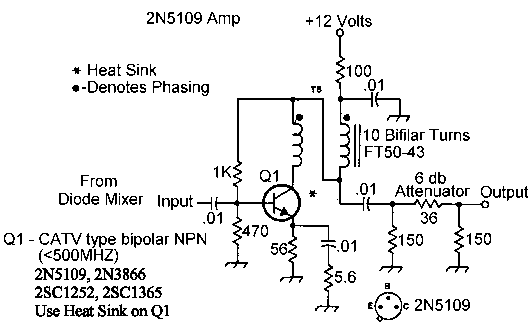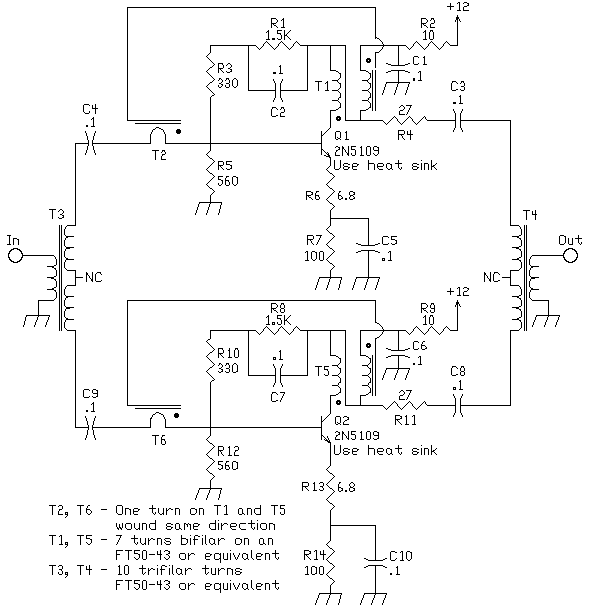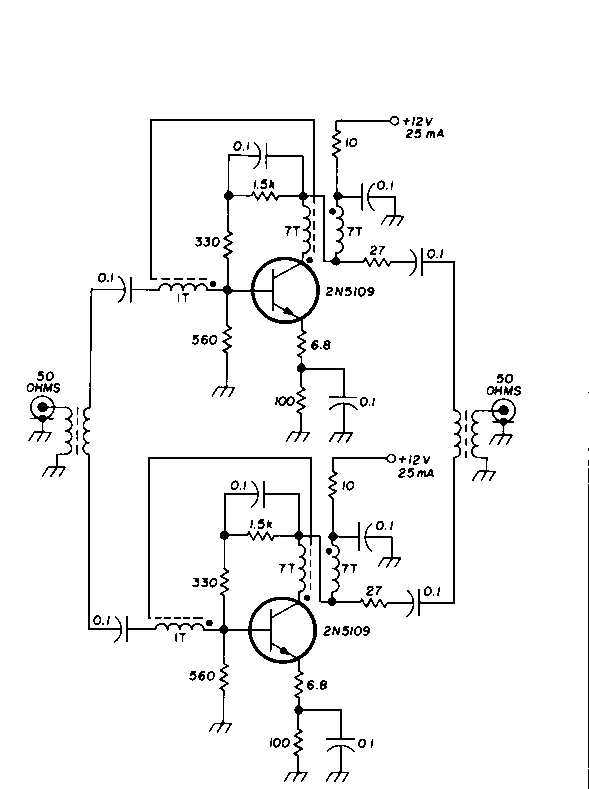


|
This diagram comes from the Progressive Communications Receiver that is in most of the latest ARRL Handbooks. This amplifier is used anywhere an IF amplifier is needed. W6BKY has a receiver article at Hamradio-online that shows how to build this circuit on a universal printed circuit board. Very compact and includes a diode mixer and crystal filter. Check out http://www.hamradio-online.com/1999/jun/w6bky-16.html The 2N5109 amplifier can be simulated using the Serenade SV program. Information on using the program and simulating the amplifier can be found at "Simulating Circuits and Systems with Serenade SV", by David Newkirk, W9VES, January 2001, QST, Page 37. The file for the amplifier is SerSV0101.ZIP at http://www.arrl.org/files/qst-binaries/ The Ansoft Serenade SV program can be downloaded as a feature-limited, student version at http://www.ansoft.com/downloads.cfm  This amplifier is used for the front-end RF amplifier. T50-43 ferrite cores are used instead of the Indiana General toroid cores noted in the text of the original article. Transformers are trifilar wound. Input and output impedances are 50 ohms. This circuit is a modified version (cores only) of the one in Ham Radio, October 1976, Ulrich L. Rohde, "Optimum Design for High-Frequency Communications Receivers", Page 18. The circuit "uses voltage and current feedback to minimize intermodulation distortion, while the transformers act as impedance stabilizing devices. The cores recommended are F625-0-TC9 for 1.5--230 MHz or F625-9-Q1 for the higher frequencies (made by Indiana General)." This amplifier was first published on October 1975, Ham Radio, "High Dynamic Range Receiver Input Stages", Page 26. A mathematical analysis of this circuit is presented in the Appendix of this article (page 31). The schematic from that article follows: 
|
Send E-Mail || Amateur Radio Receivers || Super Receiver || Super Receiver Circuit Details
